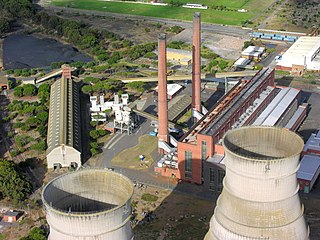This article does not cite any sources .(December 2011) (Learn how and when to remove this template message) |
This page lists all power stations in Paraguay .
This article does not cite any sources .(December 2011) (Learn how and when to remove this template message) |
This page lists all power stations in Paraguay .
| Station | Location | Capacity (MW) | Status |
|---|---|---|---|
| Itaipu Dam | 25°24′30″S54°35′21″W / 25.40833°S 54.58917°W | 14,000 | Operational |
| Yacyretá Dam | 27°28′58″S56°43′30″W / 27.48278°S 56.72500°W | 3,100 | Operational |
| Acaray Dam | 25°27′34″S54°37′45″W / 25.45944°S 54.62917°W | 210 | Operational |
| Yguazú Dam | 25°22′34″S54°57′55″W / 25.37611°S 54.96528°W | 300 | Operational |

Battersea Power Station is a decommissioned coal-fired power station, located on the south bank of the River Thames, in Nine Elms, Battersea, in the London Borough of Wandsworth. It was built by the London Power Company (LPC) to the design of Leonard Pearce, Engineer in Chief to the LPC, and CS Allott & Son Engineers. The architects were J Theo Halliday and Giles Gilbert Scott. The station is one of the world's largest brick buildings and notable for its original, Art Deco interior fittings and decor.

A power station, also referred to as a power plant or powerhouse and sometimes generating station or generating plant, is an industrial facility for the generation of electric power. Most power stations contain one or more generators, a rotating machine that converts mechanical power into electrical power. The relative motion between a magnetic field and a conductor creates an electrical current. The energy source harnessed to turn the generator varies widely. Most power stations in the world burn fossil fuels such as coal, oil, and natural gas to generate electricity. Cleaner sources include nuclear power, and an increasing use of renewables such as solar, wind, wave and hydroelectric.

Hydroelectricity is electricity produced from hydropower. In 2015, hydropower generated 16.6% of the world's total electricity and 70% of all renewable electricity, and was expected to increase by about 3.1% each year for the next 25 years.
A television station is a set of equipment managed by a business, organisation or other entity, such as an amateur television (ATV) operator, that transmits video content via radio waves directly from a transmitter on the earth's surface to a receiver on earth. Most often the term refers to a station which broadcasts structured content to an audience or it refers to the organization that operates the station. A terrestrial television transmission can occur via analog television signals or, more recently, via digital television signals. Television stations are differentiated from cable television or other video providers in that their content is broadcast via terrestrial radio waves. A group of television stations with common ownership or affiliation are known as a TV network and an individual station within the network is referred to as O&O or affiliate, respectively.
This is a list of states and territories of India by allocated power capacity from power generation utilities. When a power station has entered into power purchase agreement to supply electricity to more than one state, the total power station capacity is divided among the beneficiary states.
Power stations in the South American continent, by country:
The following are lists of hydroelectric power stations based on the four methods of hydroelectric generation: